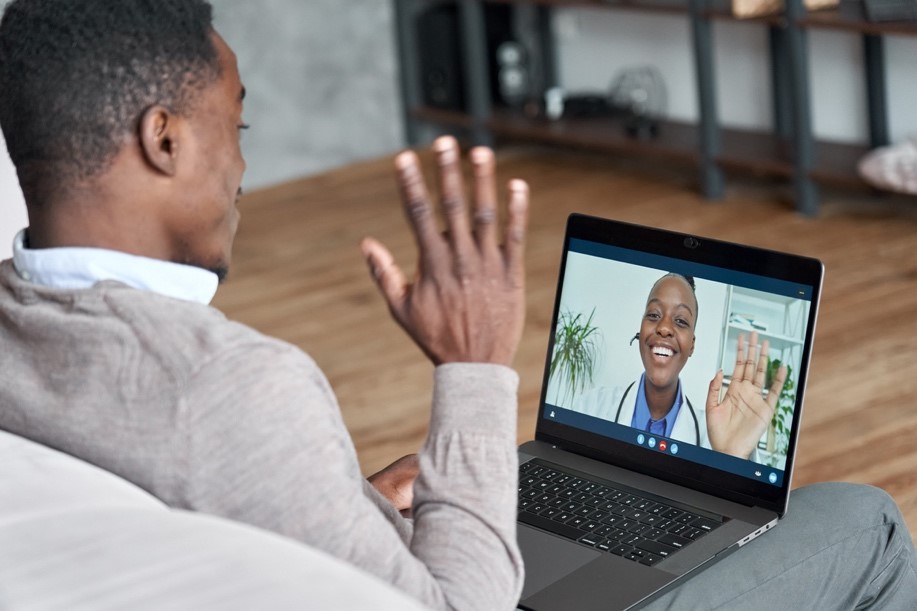Technology
- Technology is changing as you are reading this.
- 4.57 billion people in the world are active internet users, encompassing 59% of the global population. In the US, only 10% of the population do not use the internet.
- 97% of people in the US own a cell phone and 85% own a smartphone. Smartphone app usage for adults age 25-34 was 85.6 hours per month – this is equivalent to a part time job!
- The demographic of clients using technology is changing. The younger generation grew up on screens. Our profession needs to adjust to keep up clients’ needs and expectations, as well as to provide more options as a way to overcome treatment access barriers.
What is Telehealth?
Definition of Telehealth by the World Health Organization: "Delivery of health care services, where clients and providers are separated by distance. Telehealth uses information and communication technologies for the exchange of information for the diagnosis and treatment of diseases and injuries, research and evaluation, and for the continuing education of health professionals. Telehealth can contribute to achieving universal health coverage by improving access for clients to quality, cost-effective, health services wherever they may be. It is particularly valuable for those in remote areas, vulnerable groups and aging populations."
- Telehealth: The use of electronic information and telecommunications technologies to support long-distance clinical health care, client and professional health-related education, public health and health administration (HRSA).
- Telemental health: The use of telecommunications or videoconferencing technology to provide mental health services.
- Telemedicine: The practice of medicine using technology to deliver care at a distance.
- Telepsychology: The provision of behavioral and/or mental health care services using technological modalities in lieu of, or in addition to, traditional face-to-face methods.

Telehealth for Mental Health Services
When most people think of Telehealth, they’re visualizing clinical videoconferencing, or synchronous Telehealth, where therapists and clients have real-time conversation. In this context, the clinical session has a similar flow and process, and addresses the same content, as in-person clinical services. When possible, Telehealth should mirror in-person services while being conducted virtually.
Does Telehealth Impact Therapeutic Relationship?
Before using Telehealth, clinicians are often concerned about the therapeutic relationship – how can I meaningfully connect with someone and establish rapport through a screen? However, research has shown that clients actually report comparable levels of satisfaction and therapeutic alliance in Telehealth and in-person therapy settings.
Concerns often fade as clinicians gain experience doing Telehealth. In many cases, after a while, the content, process, and quality of the communication feels more comfortable for the provider as well as the client. Creative adaptations are sometimes required, for example, being flexible in the face of poor connectivity in rural areas. But the good news is that a wealth of research has shown that Telehealth is not inferior to face-to-face treatment. It is more accessible to clients but is not less powerful clinically.
Do Firefighters Prefer Telehealth?
Importantly, many firefighters are not accustomed to virtual meetings and online work and have reported that they do not prefer “fully virtual” therapy. Many firefighters may be comfortable with fully remote treatment, but many are not. Firefighters are often in the field and, unlike other professions over the past couple of years, have remained in-person. Conversations with firefighters have revealed that firefighters often are discouraged when clinical practices move to fully virtual care. It is encouraged that providers discuss this with clients and potentially offer a flexible or “hybrid” model where some or all of the sessions are conducted in-person based on firefighters’ preferences and providers discuss barriers to Telehealth with firefighters.
Which Clients Should Utilize Telehealth?
Most people who are eligible for in-person treatment are also fit for Telehealth, as the same treatment protocols, supervision, and emergency protocols are utilized for both in-person and Telehealth mental health delivery. For Telehealth, a brief assessment of the level of risk and physical safety can ensure that the client is safe in receiving mental health services via Telehealth.
Issues to consider when making a determination about Telehealth eligibility:
- Safety (e.g., history of violence or self-injurious behavior)
- Diagnosis
- Cognitive capacity
- Current and past difficulties with substance abuse
- Personality factors
- Boundaries
- Client’s familiarity with technology
- History of cooperativeness with treatment professionals (if referred)
